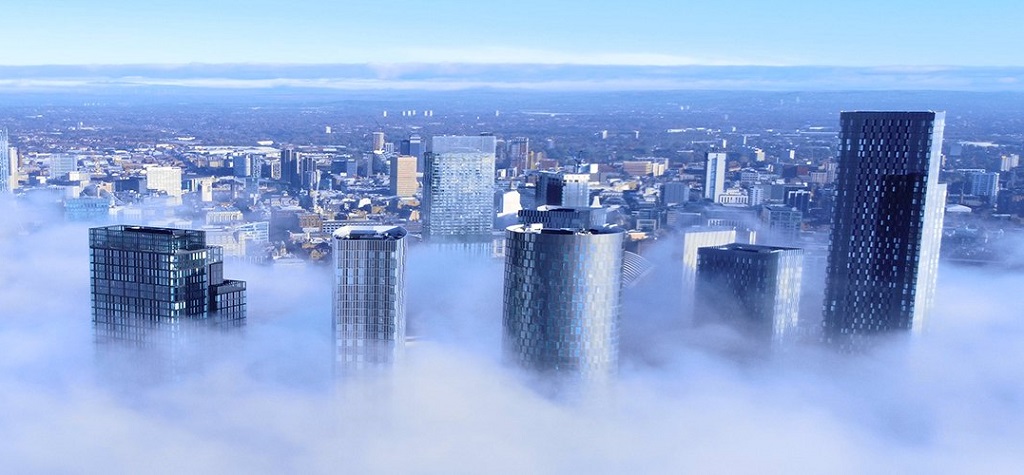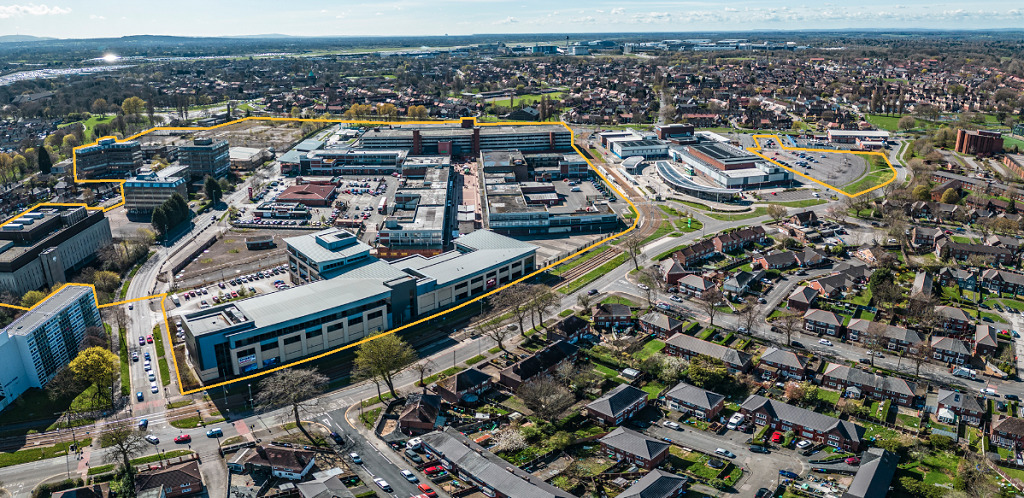Commentary
MIPIM 2024 | Greater Manchester’s next great chapter is here
As a city, Manchester’s growth story is unprecedented. MIPIM 2024 is a chance to prove we can build on this success and accelerate this growth, writes Joanne Roney CBE of Manchester City Council.
Since the year 2000, the number of residents in our city has grown by 42% and our economy is predicted to be the UK’s third fastest-growing over the next four years. Greater Manchester has proven that it doesn’t stand still and, with more opportunities across the region than ever, attending MIPIM 2024 shows the international investment community that Manchester is just getting started.
Why MIPIM?
Events like MIPIM are crucial for our city, as they help us to cement these private sector relationships. We can bring partners old and new together to present our city’s vision for growth and opportunities for collaboration. It’s an event where conversations and connections can drive real, meaningful change. Many of the developments and skyscrapers you now see when looking at Manchester city centre and beyond will have been conceived at an event like MIPIM, by like-minded people sharing a view on how to leave a lasting impact on our city.
Being united at MIPIM allows us to show the strength of this partnership to global audiences too. Investors must have confidence in the city as well as the project, which is why our platform at MIPIM is so crucial. In our Manchester circle, we know how great the city is and the potential of our projects and people, but MIPIM allows us to show this to the world.
Through panel sessions that show our expertise to shining a spotlight on our investible propositions, a strong and united message from the Manchester partnership will catch the eye of international investors and give certainty in our ability to deliver. We combine our efforts to explore how we meet the challenges of digital transformation, infrastructure, and net zero – including decarbonisation but also green jobs and skills growth.
Manchester’s prime time
MIPIM 2024 is coming at a very exciting moment for Greater Manchester, and it feels like there’s never been a better time to engage the international real estate community. With our Trailblazer devolution deal secured, Greater Manchester can take ownership of transport, talent and opportunities that will be pivotal for our future growth over the next decade from education and skills to transport and growth.
Our city is prioritising innovation, to become a pioneer in new world-leading technologies in sectors like advanced manufacturing and materials, digital and tech, life sciences, net zero and creative industries. Greater Manchester is an investment zone for advanced manufacturing sectors, showing the UK government’s faith in our innovative capabilities.
Alongside this, we’re focusing on a more inclusive growth model; one that drives benefits outside of the city centre and ensures all our residents can access opportunities easily. If our city does well, we know our people need to feel the benefits. We’re also focusing our efforts outside of the city in areas like Wythenshawe and Airport City as well as investment in our region’s town centres and areas like to redevelop and enhance areas for the benefit of the people who live there.
Plus, there’s a real buzz around the city, particularly in our cultural sector; with Chanel choosing the Northern Quarter as a show destination, the English National Opera announcing relocation plans to our city, and the opening of the biggest cultural investment in the UK since the Tate Modern: Aviva Studios. And it doesn’t stop there with Co-Op Live arena opening soon. It feels like Manchester is gaining global recognition as a truly vibrant and exciting place to live and invest.
All of this and more is catching the eye of the international real estate market which is why MIPIM 2024 is the time for Greater Manchester to present a strong, united vision to build on our success. Don’t be fooled into thinking Manchester’s growth story has already happened, it’s just ready for its next chapter.
Our growing city
In the built environment, our city centre has changed dramatically. Our skyline is continually growing and the boundary lines are gradually expanding.
Over the last decade, our city has established unique neighbourhoods and communities, each with its own identity and personality. From the business district of Spinningfields and Ancoats, recently voted one of the UK’s coolest neighbourhoods, to newer developments like the eco-conscious Mayfield and community-driven NOMA, there are many areas in Manchester that simply didn’t exist 10 years ago but that are now integral to our city’s personality.
The prioritisation of mixed-use residential, commercial, and community spaces is helping us to create outstanding places to live, work, and play, which in turn means our city is becoming a magnet for talent, businesses, and investors, accelerating the region’s growth journey.
Economic growth
Greater Manchester’s success and economic growth have not happened by accident. Not only is our city resilient and able to adapt to changing and challenging times but we have a clear ambition and strategy that helps us remain focused and ensure we’re delivering the right kind of growth.
By having a clear strategy that outlines our frontier sectors, Greater Manchester has developed a diverse economy and strong ecosystem for business that inspires innovation, new ideas and collaborations. This, in turn, has fuelled the growth of areas such as The Oxford Road Corridor, Salford’s MediaCityUK, and Stockport Exchange, and will now support innovation and growth locations across the wider city region with the likes of Atom Valley, the Salford Innovation Zone, Trafford Park, Airport City, and the redevelopment of Bolton, Wigan, and Stockport town centres; providing better jobs, houses, and opportunities.
The power of collaboration
To continue the city’s upward trajectory, we need to collaborate with like-minded private sector partners that share our vision and ambitions. In Manchester, we are proud of the deep and meaningful relationships we hold with our private sector partners but also of the stability and confidence we can offer them through leadership. It is because of these relationships that our city has been able to grow so quickly and successfully. That’s important because it is the vision, tenacity, and passion of our partners that will inevitably help us to accelerate this into the next decade.
- Joanne Roney is chief executive of Manchester City Council
Joanne Roney will be attending MIPIM in March, alongside other Greater Manchester leaders. To learn more about attending MIPIM with the Manchester Invest Partnership or to view the full programme of events on the Manchester stand visit invest.marketingmanchester.com/manchester-at-mipim.






As good as it sounds I’m still not sure relocation of ENO is a good thing. Now they are competing with Opera North in Leeds and I’m not sure the audience is big enough to sustain both! I hope it is! But it was a top down Whitehall decision so I don’t think a lot of market viability assessment was done. Just don’t want a situation where you end up losing one of them. Hopefully they thrive.
By H
Is the 42% residential growth based on Greater Manchester, Manchester city district or Manchester city centre?
By Albert
I think the 42% growth since 2000 is a little misleading. I am sure there was a population recount in 2001 which found a whole bunch of ‘new’ people. Can’t remember the exact details now but I think other councils asked for recounts but were denied. Anyhow, 2001 with the new / updated figures until now would paint a more accurate picture.
By Chris
A few years years down the line you just know ENO and Opera North with merge and share funding regardless of which government comes in. On a more positive note Joanne and Bev keeping the momentum going that sir Richard and Howard Bernstein so skilfully started all those years ago.
By Anonymous
The 42% population explosion is based on Manchester City centre itself which had quite a small population previously due to decades of decline….the 42% figure sounds a lot but I think I once you find out the city centre population was actually so small its not a surprising figure.
By Cristoforo